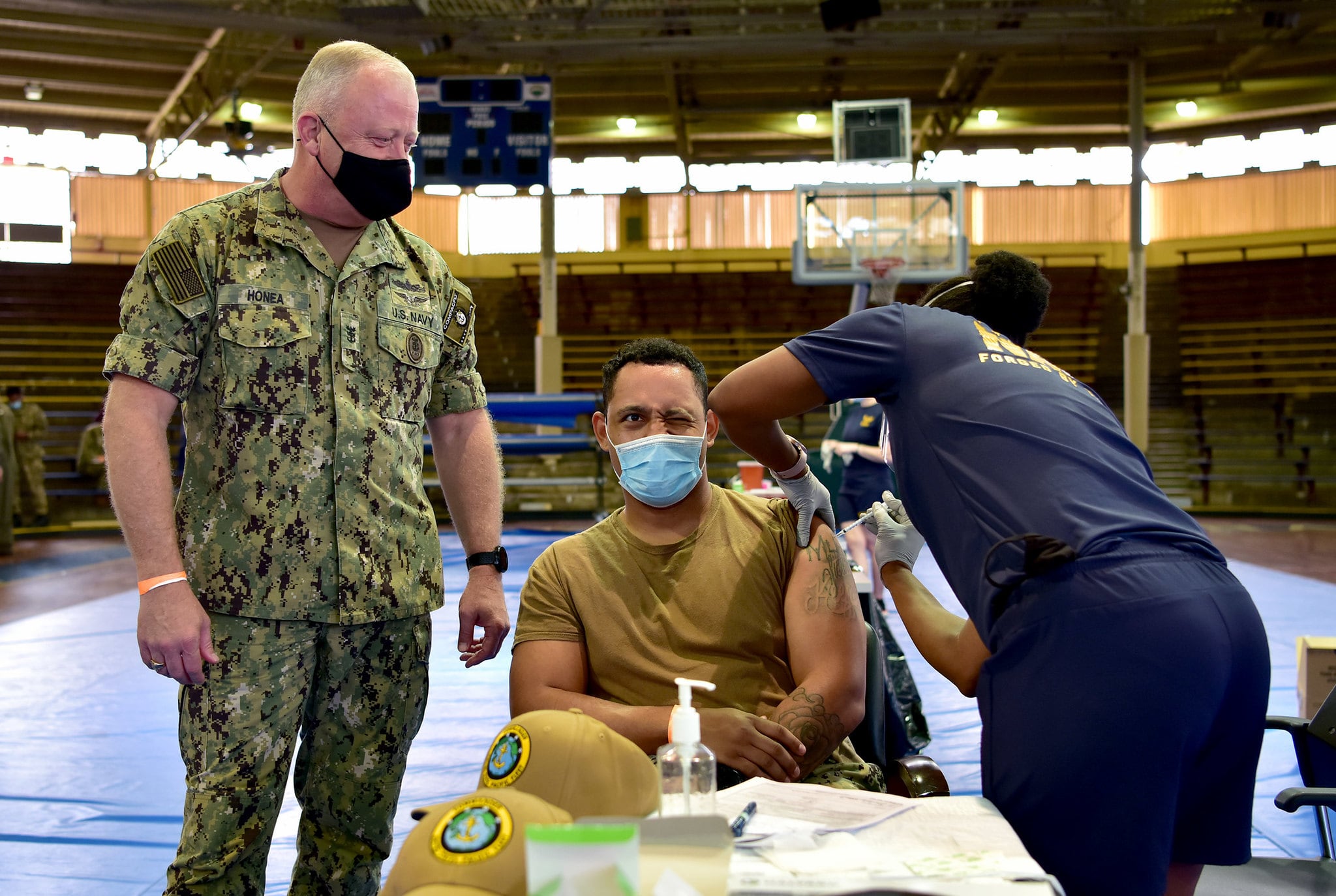The Defense Department is two months into vaccinating its personnel against COVID-19, but some troops downrange are wondering when their “shots-in-arms” will arrive.
The Pentagon can’t say precisely how many doses have gone to deployed units, a defense official who was not authorized to speak on the record told Military Times on Wednesday, only that out of more than a million doses shipped worldwide, more than 200,000 have gone outside of the contiguous United States. That includes to personnel stationed overseas in Germany, Italy, Korea and Japan.
“If we have a major outbreak here, it has huge operational impacts. and yet, our providers haven’t even been vaccinated yet,” a soldier whose unit is spread across Iraq, Kuwait, Saudi Arabia and Syria, who asked not to be identified, told Military Times. “It’s crazy.”
Fewer than 10 troops in his brigade have been vaccinated, he said.
“My guess is they just don’t really have a plan,” he said. “It’s easy to use the Germany/Korea numbers as window dressing, but we’re frustrated.”
Technically, deployed troops are in the same prioritization tier as deploying troops, Phase 1b. Medical staff, deployed or not, are Phase 1a.
“It’s safe to say the stuff that is going out, is going to the tier 1a and tier 1b,” the official said.
The bottleneck may be happening on the receiving end, the official suggested.
“There’s not a logistical challenge. We do this anyway, right? If it’s beans, bullets, now it’s vaccines,” the official said. “We’re good at getting it there. Like here in the States, it in large part falls on the command structure there, and the medical command structure there, and the medical capabilities to do that.”
In theory, if troops are not vaccinated before they leave on deployment, there are mitigation processes in place. They’re put on a restriction-of-movement for two weeks before deploying, and sometimes for two weeks after arriving, in addition to testing.
Personally, the soldier said, he was tested after a 14-day quarantine, but then not made to continue quarantine while he waited for his results ― directly counter to Centers for Disease Control and Prevention guidelines.
“Let’s be honest, military folks think they’re invincible,” he said. “And lots of our population thinks COVID is bullshit. So you get widespread mask wearing, but also widespread not mask wearing.”
RELATED

And on top of that, the military’s cases have resulted in few mortalities and a much lower hospitalization rate than the general public.
“And from the outside in, I get it: if you’re a deployable population, you’re probably young and healthy and generally low-risk, and that is true.”
While the quarantine scheme is imperfect, he said, the bigger concern downrange is the other groups working with different rules.
“It’s the huge reliance on [third-country nationals]/contractors, who come and go, and are unrestricted once they leave post,” he said, leaving standards like masks and physical distancing completely up in the air.
As the weeks have worn on, DoD has been able to get its average administered doses up from around 50 percent to over 80 percent, indicating the wheels are turning more rapidly than before.
As of Thursday, more than 1.1 million doses have gone out, and over 900,000 of those have been administered.
“The good news is, we did a lot of that prioritization with testing,” the official said. “I don’t think it’s exactly the same, but the work as been done about evaluating, how many people, who needs it most?”
Meghann Myers is the Pentagon bureau chief at Military Times. She covers operations, policy, personnel, leadership and other issues affecting service members.





